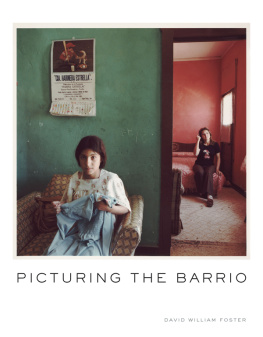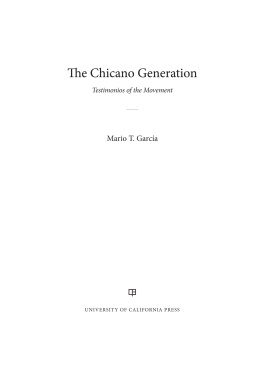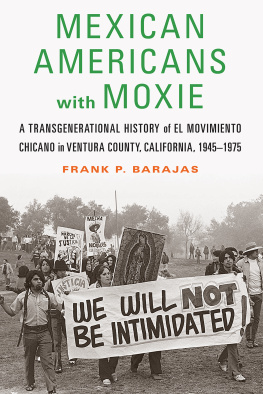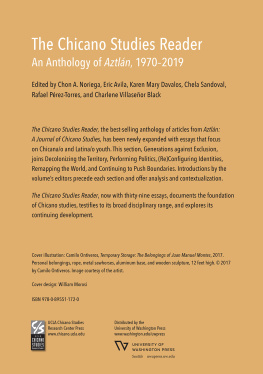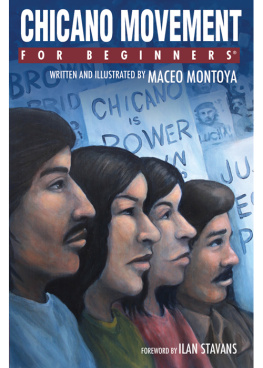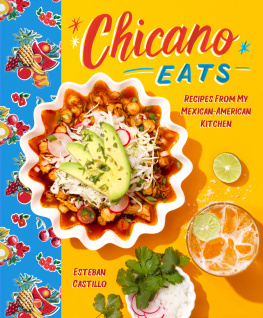Preface
Scholarly attention has increasingly focused on the feminization of the labor force since World War II, especially on the great increase in paid employment among women with childrena phenomenon that has been characterized as a subtle revolution (Smith 1979). The impact of this development on women themselves continues to be debated. Some people argue that women gain autonomy because of their new earning power; others show that Womens employment contributes to their subordination; still others hold that the gender inequality within families is reconstituted in new forms in the workplace.
Most research on women workers in the United States has overlooked Chicanas. and these statistics reflect an increasing population of Mexican-American women. At the end of World War II, Chicanos were concentrated in Southwest labor markets, which only in recent decades have expanded to provide large-scale employment for women. The growth of Chicanas labor-force participation has brought many changes to Chicano families, changes this book will investigate.
Chicanas living in California have often found work in the fruit-and vegetable-canning industry, which has always employed many women and ethnic minority workers and has been among the most important contributors to the economy of the Santa Clara Valley, where I did my fieldwork. In recent years, however, the canning industry has declined until few full-time jobs are available, and even seasonal jobs are at a premium. Working conditions are archaic. These realities affect not only a womans feelings about her work but the organization of her family life as well. This book examines the linkages between Chicano family life and gender inequality in the labor market, specifically the inequality associated with long-term seasonal employment in the canning industry.
Recent research on Chicano families has suggested that women gain power and autonomy when they become employed, and that therefore Chicano families are more egalitarian when wives work. Leonarda Ybarra (1977, 1982a, 1982b), for example, has claimed that such couples are more likely to have egalitarian values in regard to the household division of labor and to act on those values. Glenn Hawkes and Minna Taylor (1975) and Maxine Baca Zinn (1980) support this view, having found that decision making in Chicano families is shared more fully by working wives than by full-time homemakers. This research, however, fails to distinguish women who hold fulltime jobs from those who work part time or seasonally, as do the cannery workers I studied. Several incidents that occurred as my fieldwork began caused me to question whether the perspective of the existing research permitted adequate understanding of the impact of Womens seasonal cannery work on Chicano families.
The first Chicana cannery worker I interviewed was Gloria Gonzales, who lived in San Joses east-side barrio. Gloria invited me into her home to sit in the living room with her husband and some neighbors, who were drinking beer. I suggested that we go someplace else or arrange to meet again some other time, but she was eager to begin at once. Despite misgivings, I started to explain my interest in women workers. Glorias husband, Frank, interrupted to announce, Oh, she doesnt work, she just sits around the house all day. I explained that I had been told Gloria was a cannery worker. Oh, she is, he said. I asked Gloria how long she had been working. Twenty-four years this season, she replied. Evidently my presence and Franks drunkenness had brought out a recurring marital conflict.
Gloria and I began an informal conversation about her job: how she had gotten it, what she did, and how she felt about it. Frank continued to drink and joke with the neighbors. Throughout our conversation, the others interjected their own commentary, teasing and arguing with one another. Their verbal jabs made it clear that Frank and Gloria had been quarreling. In the middle of our talk, Frank announced that Gloria was going to quit so that she could stay home and take care of their youngest son, who was seven years old. Gloria explained that she had the option to freeze her seniority and retire early, and that she planned to do so after next season: Its better not to work, get unemployment, and you get by. But later, when I asked for her general views on employment for married women, she indicated that she placed a high value on independence: Women should work outside the home, see what they can do for themselves. It brings you satisfaction to earn your own money when youre old and your husband is gone. With a glance at Frank, she laughed and said, When I quit, fm going to start a housewives union.
Glorias sally brought an abrupt end to Franks patience, and he became abusive. Gloria, he complained, was lazyand to support his charge he enumerated a long list of domestic chores (including making his dinner) that she had not completed. He was so dissatisfied with her negligence, he informed me, that they now slept apart. He then questioned my motivations and integrity, demanding to know what I was going to do with the interview information. He shouted, You could be anybody, from the unionwho knows? Gloria could get fired. When I tried to explain that I was doing independent research, he launched into a harangue about people who help those Mexican people. He obviously did not identify himself as a Mexican (the term I had unfortunately used) and felt threatened by my questions. His anger was intense.
It was clear that our meeting could not continue. Gloria walked with me to my car, and we scheduled an interview in my home. She apologized profusely, emphasizing that Frank had been drinking all day. Then she rationalized: Hes awful, but hes better than nothing.
At the time I was concerned that I had precipitated the blowup, but I later concluded that I had become embroiled in an ongoing struggle over the working-wife issue: Frank wanted Gloria to quit; she planned to work one more season. My questions had broken through the facade of marital harmony normally presented to strangers. This incident revealed that when Chicanas enter the labor force, the possibilities of egalitarian family practices clash with traditional gender ideology. Why was Glorias seasonal job still a matter of contention after so many years?
A short time later I interviewed Blanca Ramrez, who had been working the four-month season at the cannery for twenty years. Blanca was a sorter, at the bottom of the cannery job ladder. She wanted a promotion and was succinct in her appraisal of her chances of moving up: Discrimination is blatant. If youre white or know the bosses, you last maybe a week on the line. If youre brown or a woman, you work for years and never get promoted. Blanca belonged to a group of workers who only a year earlier had won a race and sex discrimination suit against California Processors, Inc. (a canning industry association).
Several weeks later, at a party attended primarily by Chicano cannery workers, I tried to explain my research to Mary Lou, a Chicana seasonal worker, and her Anglo husband, a plant superintendent at another cannery. As I spoke of my interest in women cannery workers, her husband interrupted: Theyre all women, and they all can be replaced by a machine. After a tense silence, Mary Lou said winsomely, Where could you find a machine that acts like me? She tilted her head and fluttered her eyelashes. In an effort to erase tension by self-mocking silliness, she told us of the crazy things she did, and then she repeated her question. Everyone laughed at her clowning and the absurdity of the notion that a machine actually could replace Mary Lou. Most of the women present were seasonal cannery workers, and they could not have been pleased to hear this management representative callously refer to the possible loss of their jobs. His insensitivity was blatant, and so was the deference that everyones laughter accorded him.


